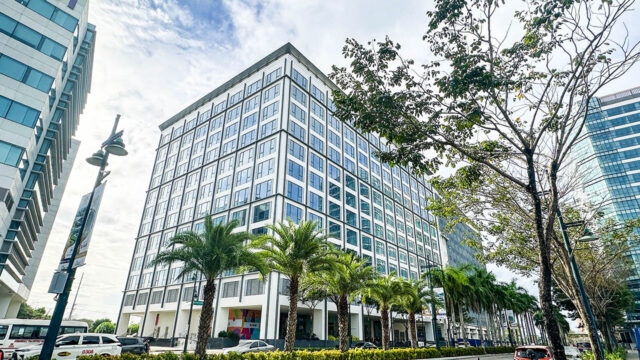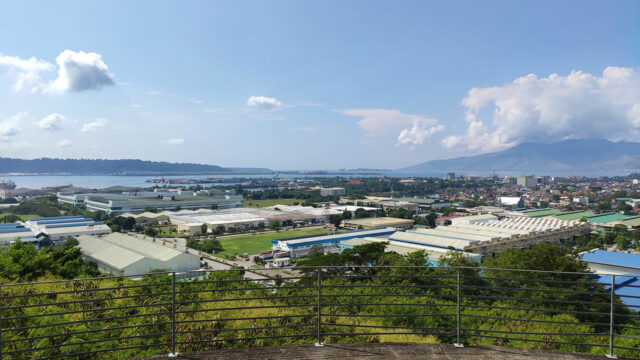Linggo ng Musikang Pilipino centers on community, collaboration for 11th year
TO ADAPT to the vibrant and evolving landscape of the local music industry, Linggo ng Musikang Pilipino (Philippine Music Week), or LMP, is promoting and supporting Filipino artists with a focus on community and collaboration.
Organized and produced by the Organisasyon ng Pilipinong Mang-aawit (OPM) and co-presented by the Filipino Society of Composers, Authors and Publishers, Inc. (FILSCAP), 2025 marks the annual music festival’s 11th year.
This year’s celebration has the theme “LMP25: Ikaw. Ako. Tayo.” (LMP25: You. Me. Us.). Its events are currently ongoing and will run until Aug. 1.
OPM Executive Director Gab Cabangon noted that community and collaboration are key in developing the local music industry.
“This event inspires all of us to embrace our culture, continuously hone our craft, and promote original Philippine music,” Mr. Cabangon said at the opening of the LMP25 music talk on July 26 at Greenhills. “We have so much to share, not just locally, but also internationally. I’ve always said this, but Filipino artists are just as good as, if not even better than, international artists.”
The programs include OPM Spotlight performances in different areas of Metro Manila, which brought together over 50 artists across multiple venues throughout July. Because OPM membership “grew significantly this year,” it marks the first time that the lineup was made 100% of artists who are part of the organization.
This year’s concerts featured performances by Color It Red, Noel Cabangon, dwta, Solace Out the Door, and PhilPop Himig Handog grand champion Tiara Shaye, among many others.
One series of performances is currently taking place at Power Plant Mall, Makati City, daily at noon and 5 p.m. until July 30.
MUSIC TALK
LMP also partnered with FILSCAP for the half-day program “LMP25: Music Talk Series,” which brought together music industry professionals to give insights on songwriting, music production from the label’s perspective, and licensing and publishing.
“How people spoke, say, eight years ago is very different from how people speak now,” said Ben&Ben member Miguel Benjamin Guico at the talk on July 26, giving advice to songwriters in the audience. “It pays to be immersed in different generations.”
In a fast-paced digital world, he recommended that musicians “broaden their perspectives and be adaptable” in order to remain relevant as well as timeless. “You have to have a zest and passion for discovery,” he added.
For Jeli Mateo, chief executive officer of independent label Flip Music Productions, it is now absolutely essential for artists to know their identity.
“Visual branding is everything now. How you communicate your story is a huge part of the consumption patterns of this generation,” she said at the panel for the label’s perspective.
Sony Music Philippines’ Artist Management Director Raymond Fabul echoed this, advising that staying true to one’s genre or branding is better than planning for it.
“Music is cyclical, so there will always be genres or trends that emerge at any given time, but it doesn’t mean the rest of it disappears. There’s so many people streaming and there’s now so much control over your preferences and algorithms that can feed you the niche that you want,” Mr. Fabul said.
Marivic Benedicto, president of the Philippine Association of the Record Industry or PARI, added that copyright is another matter that Filipino musicians can easily get informed on these days.
“Copyright is attached from the moment of creation, but for third-party reference, you can register to have your composition’s copyright registered with IPOPHL (the Intellectual Property Office of the Philippines) for just P500,” she said.
“This is helpful for situations like when a bad actor is claiming your work on a platform like YouTube.”
FILSCAP Licensing Manager Mich Maskariño concluded that their events, like songwriting camps and open mic nights, are there for up-and-coming artists who want more exposure.
“A few compositions have been picked up there for use in TV shows,” she said. “It’s just a matter of signing up and going there to showcase your work.”
For more information and the full schedule of LMP25’s remaining events, visit www.lmp.com.ph/ and www.facebook.com/PinoySingers/. — Brontë H. Lacsamana






















